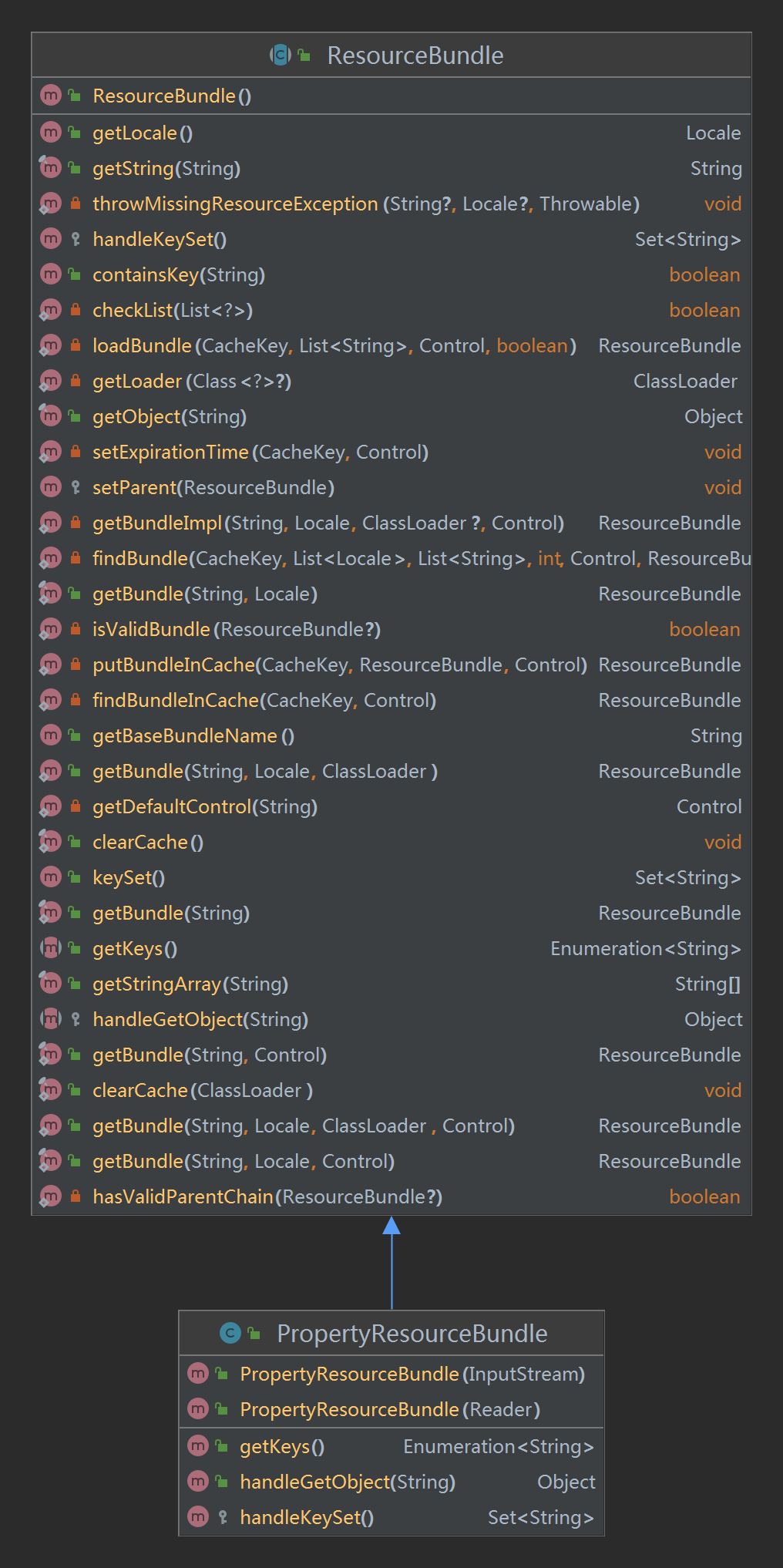| 读取properties文件的6种方式,建议收藏! | 您所在的位置:网站首页 › Spring properties文件 读取bean属性 › 读取properties文件的6种方式,建议收藏! |
读取properties文件的6种方式,建议收藏!
|
你好,我是田哥 手写分布式配置中心一步一个脚印正在进行中。 这年头基本上都是使用Spring Boot开发,然后都知道在项目中会有个application.properties配置文件(也有的是application.yaml,反正就是用来保存我们的一些配置信息),通常我们会把一些配置信息写到properties文件中,比如:数据库连接信息、第三方接口信息(密钥、用户名、密码、地址等),连接池、Redis配置信息、各种第三方组件配置信息等。 单体服务,甚至一些小型的分布式架构中,项目的配置都是依赖一个application.properties配置文件来解决(可能有的项目会搞一个环境区分,比如:application-dev.properties、application-pro.properties等)。不过,可能伴随着业务的发展和架构不断升级,服务的数据以及每个服务涉及到配置信息会越来越多,并且对于配置管理的要求也是越来越高,比如配置信息的实时性、独立性等。 同时,我们在微服务架构下,可能还会涉及到不同环境下的配置管理、灰度发布、动态限流、动态降级等需求,包括对于配置内容的安全与权限,所以传统的配置维护方式很难达到需求。 于是,分布式配置中心就在这样的环境下产生了。 本文我们先搞清楚java中读取properties配置文件,到底有哪些方法。 Java读取properties配置文件的6种方式 需求背景需求是我们项目中有个jdbc.properties 配置文件,内如如下: jdbc.driver=com.mysql.cj.jdbc.Driver jdbc.url=mysql://localhost:3306/database?useUnicode=true&characterEncoding=utf-8&serverTimezone=Asia/Shanghai jdbc.username=root jdbc.password=123456现在是想要在java代码中获取上面配置文件内容。 第一种方式第一种方式我们采用:this.getClass().getResourceAsStream()+Properties 代码实现: /** * @author tianwc * @version 1.0.0 * @date 2023年05月27日 09:13 * 在线刷题1200+,100+篇干货文章:博客地址 */ public void readProperties1() throws IOException { //不加/会从当前包进行寻找,加上/会从src开始找 InputStream inputStream = this.getClass().getResourceAsStream("/jdbc.properties"); Properties properties=new Properties(); properties.load(inputStream); System.out.println("jdbc.driver="+properties.getProperty("jdbc.driver")); System.out.println("jdbc.url="+properties.getProperty("jdbc.url")); System.out.println("jdbc.username="+properties.getProperty("jdbc.username")); System.out.println("jdbc.password="+properties.getProperty("jdbc.password")); }下面来聊聊上面的这段代码: this.getClass().getResourceAsStream()具体文件和代码的位置是,代码在src/main/java目录下,资源文件在src/main/resources/目录下。 会从当前类的目录下去找,这个文件如果不和该类在一个目录下,就找不到。 会从编译后的整个classes目录下去找,maven也会把资源文件打包进classes文件夹,所以可以找到。 ClassLoader就是从整个classes文件夹找的,所以前面无需再加/ PropertiesProperties:java.util.Properties,该类主要用于读取Java的配置文件,不同的编程语言有自己所支持的配置文件,配置文件中很多变量是经常改变的,为了方便用户的配置,能让用户够脱离程序本身去修改相关的变量设置。就像在Java中,其配置文件常为.properties文件,是以键值对的形式进行参数配置的。 类关系图:  从上面的类图可以看到Properties类继承至Hashtable,相信大家都知道Hashtable是存储key-value数据结构类,也刚好对应我们properties文件内容也是key-value形式。 Properties 常见方法getProperty(String key) :在此属性列表中搜索具有指定键的属性。如果在此属性列表中找不到该键,则会检查默认属性列表及其默认值(递归)。如果未找到该属性,则该方法返回默认值参数。 list(PrintStream out) 将此属性列表打印到指定的输出流。此方法对于调试很有用。 load(InputStream inStream) :从输入字节流中读取属性列表(键和元素对)。输入流采用加载(Reader)中指定的简单的面向行的格式,并假定使用ISO 8859-1字符编码;即每个字节是一个Latin1字符。不在Latin1中的字符和某些特殊字符在使用Unicode转义符的键和元素中表示。 此方法返回后,指定的流仍保持打开状态。 setProperty(String key, String value) :调用 Hashtable 的方法 put 。他通过调用基类的put方法来设置 键值对。 store(OutputStream out, String comments) :将此Properties表中的此属性列表(键和元素对)以适合使用load(InputStream)方法加载到Properties表的格式写入输出流。 此Properties方法不会写出此Properties表的defaults表中的属性(如果有)。 storeToXML(OutputStream os, String comment, String encoding) :使用指定的编码发出表示此表中包含的所有属性的XML文档。 clear() :清除此哈希表,使其不包含任何键。 stringPropertyNames() :返回此属性列表中的一组键,其中键及其对应的值是字符串,如果尚未从主属性列表中找到相同名称的键,则包括默认属性列表中的不同键。键或键不是String类型的属性将被省略。 properties.load(inputStream)public synchronized void load(InputStream inStream) throws IOException { load0(new LineReader(inStream)); } private void load0 (LineReader lr) throws IOException { char[] convtBuf = new char[1024]; int limit; int keyLen; int valueStart; char c; boolean hasSep; boolean precedingBackslash; //逐行读取 while ((limit = lr.readLine()) >= 0) { c = 0; keyLen = 0; valueStart = limit; hasSep = false; //System.out.println("line="); precedingBackslash = false; while (keyLen < limit) { c = lr.lineBuf[keyLen]; //need check if escaped. if ((c == '=' || c == ':') && !precedingBackslash) { valueStart = keyLen + 1; hasSep = true; break; } else if ((c == ' ' || c == '\t' || c == '\f') && !precedingBackslash) { valueStart = keyLen + 1; break; } if (c == '\\') { precedingBackslash = !precedingBackslash; } else { precedingBackslash = false; } keyLen++; } while (valueStart < limit) { c = lr.lineBuf[valueStart]; if (c != ' ' && c != '\t' && c != '\f') { if (!hasSep && (c == '=' || c == ':')) { hasSep = true; } else { break; } } valueStart++; } //前面一堆代码就是做校验和解析 //下面两个是做转换 String key = loadConvert(lr.lineBuf, 0, keyLen, convtBuf); String value = loadConvert(lr.lineBuf, valueStart, limit - valueStart, convtBuf); put(key, value); } }最后调用put(key, value);这个put方法就是Hashtable中的put方法。这里可以这么理解:将我们的配置项保存到Hashtable中。 getProperty(String key) public String getProperty(String key) { Object oval = super.get(key); String sval = (oval instanceof String) ? (String)oval : null; return ((sval == null) && (defaults != null)) ? defaults.getProperty(key) : sval; }super.get(key);就是调用Hashtable中的get()方法,也就是此时返回value,同时这就对应返回了properties文件中key对应的value。 第二种方式第二种方式,我们通过当前类的加载器进行读取this.getClass().getClassLoader().getResourceAsStream()获取InputStream。 代码实现: /** * @author tianwc * @version 1.0.0 * @date 2023年05月27日 09:13 * 博客地址:在线刷题1200+,100+篇干货文章 */ public void readProperties2() throws IOException { //不加/,若加了会为null InputStream inputStream = this.getClass().getClassLoader().getResourceAsStream("jdbc.properties"); //如果放在config目录下 //InputStream inputStream = this.getClass().getClassLoader().getResourceAsStream("config/jdbc.properties"); Properties properties=new Properties(); properties.load(inputStream); System.out.println("jdbc.driver="+properties.getProperty("jdbc.driver")); System.out.println("jdbc.url="+properties.getProperty("jdbc.url")); System.out.println("jdbc.username="+properties.getProperty("jdbc.username")); System.out.println("jdbc.password="+properties.getProperty("jdbc.password")); }第一看怎么觉得和第一种方式很像,下面来说说两个的区别。 this.getClass.getResourceAsStream() 从当前类所在的位置开始查找配置文件位置。要找到jdbc.properties必须加/从classpath下开始查找this.getClass().getClassLoader().getResourceAsStream() 默认就从classpath路径下开始查找,加上/会报空指针异常。剩下的部分代码和第一种方式一样,这里就不在赘述了。 第三种方式接下来我们采用ClassLoader类的static方法 getSystemResourceAsStream()。 /** * @author tianwc * @version 1.0.0 * @date 2023年05月27日 09:13 * 博客地址:在线刷题1200+,100+篇干货文章 */ public void readProperties3() throws IOException { //如果存放到config目录下 //InputStream inputStream = ClassLoader.getSystemResourceAsStream("config/jdbc.properties"); InputStream inputStream = ClassLoader.getSystemResourceAsStream("jdbc.properties"); Properties properties=new Properties(); properties.load(inputStream); System.out.println("jdbc.driver="+properties.getProperty("jdbc.driver")); System.out.println("jdbc.url="+properties.getProperty("jdbc.url")); System.out.println("jdbc.username="+properties.getProperty("jdbc.username")); System.out.println("jdbc.password="+properties.getProperty("jdbc.password")); }ClassLoader中的getSystemResourceAsStream()方法,它用于获取资源作为参数并将资源转换为InputStream。例如,我们可以使用该方法获取网站的静态资源并将其转换为InputStream。 说白了就是获取InputStream的方式不同罢了,最终还是交给Properties去解析jdbc.properties文件内容。 第四种方式我们在实际开发中,基本上都是离不开Spring了,所以,接下来我们使用Spring中的 ClassPathResource读取配置文件。 代码实现: /** * @author tianwc * @version 1.0.0 * @date 2023年05月27日 09:13 * 博客地址:博客地址 */ public void readProperties4() throws IOException { ClassPathResource resource = new ClassPathResource("jdbc.properties"); //ClassPathResource resource = new ClassPathResource("config/jdbc.properties"); Properties properties= PropertiesLoaderUtils.loadProperties(resource); System.out.println("jdbc.driver="+properties.getProperty("jdbc.driver")); System.out.println("jdbc.url="+properties.getProperty("jdbc.url")); System.out.println("jdbc.username="+properties.getProperty("jdbc.username")); System.out.println("jdbc.password="+properties.getProperty("jdbc.password")); }这里PropertiesLoaderUtils是spring-core.jar下面的,全路径名称: org.springframework.core.io.support.PropertiesLoaderUtils。 PropertiesLoaderUtils.loadProperties(resource)源码部分: public static Properties loadProperties(EncodedResource resource) throws IOException { //创建一个Properties对象 Properties props = new Properties(); //处理文件内容并赋值给props fillProperties(props, resource); return props; }fillProperties(props, resource);方法: public static void fillProperties(Properties props, EncodedResource resource) throws IOException { fillProperties(props, resource, ResourcePropertiesPersister.INSTANCE); } static void fillProperties(Properties props, EncodedResource resource, PropertiesPersister persister) throws IOException { InputStream stream = null; Reader reader = null; try { //省略不相关代码 stream = resource.getInputStream(); //获取InputStream persister.load(props, stream); } finally { //关闭 } }最后到PropertiesPersister的persister.load(props, stream); public void load(Properties props, InputStream is) throws IOException { props.load(is); }这里又回到Properties类中的load()方法里了。 绕了半天也只是获取InputStream的方式不同而已 第五种方式接下来我们来使用PropertyResourceBundle读取InputStream流,实现配置文件读取。 代码实现: public void readProperties5() throws IOException { InputStream inputStream = ClassLoader.getSystemResourceAsStream("jdbc.properties"); //InputStream inputStream = ClassLoader.getSystemResourceAsStream("config/jdbc.properties"); PropertyResourceBundle bundle = new PropertyResourceBundle(inputStream); System.out.println(bundle.getString("jdbc.driver")); System.out.println(bundle.getString("jdbc.url")); System.out.println(bundle.getString("jdbc.username")); System.out.println(bundle.getString("jdbc.password")); }好像也没什么, PropertyResourceBundle源码我们来看看 new PropertyResourceBundle(inputStream);源码部分: public PropertyResourceBundle (InputStream stream) throws IOException { Properties properties = new Properties(); properties.load(stream); lookup = new HashMap(properties); }这个构造方法里直接new了一个Properties对象。然后调用load方法解析。 所以,这种方式无非就是在Properties基础之上再封装了,也就是让我们使用起来更加方便。 PropertyResourceBundle类关系图 所以,上面代码中的bundle.getString("jdbc.url")其实调用的是父类中方法; public final String getString(String key) { return (String) getObject(key); }最终调用到PropertyResourceBundle的handleGetObject()方法: public Object handleGetObject(String key) { if (key == null) { throw new NullPointerException(); } return lookup.get(key); }lookup就是一个HashMap:lookup = new HashMap(properties); 第六种方式第五种方式中我们看到了ResourceBundle,接下来我们就是用ResourceBundle.getBundle()实现。 //不用输入后缀 public void readProperties6() { ResourceBundle bundle=ResourceBundle.getBundle("jdbc"); System.out.println(bundle.getString("jdbc.driver")); System.out.println(bundle.getString("jdbc.url")); System.out.println(bundle.getString("jdbc.username")); System.out.println(bundle.getString("jdbc.password")); }直接使用文件名称就可以了,不需要写文件后缀名。 java.util.ResourceBundle.getBundle(String baseName) 方法获取使用指定的基本名称,不需要文件后缀名,默认的语言环境和调用者的类加载器获取资源包。 如果 baseName 为 null ,则报异常NullPointerException 如果可以找到指定的基没有相应的资源包 ,则报异常MissingResourceException 总结以上就是我们通常在java中读取properties文件的6中方式。 另外,还有我上一次给大家分享的:Spring Boot读取配置4种方式,建议收藏! 最后就是org.springframework.core.env.Environment方式读取,这个下次再分享。 参考:blog.csdn.net/yirenDM/article/details/130488107 |
【本文地址】